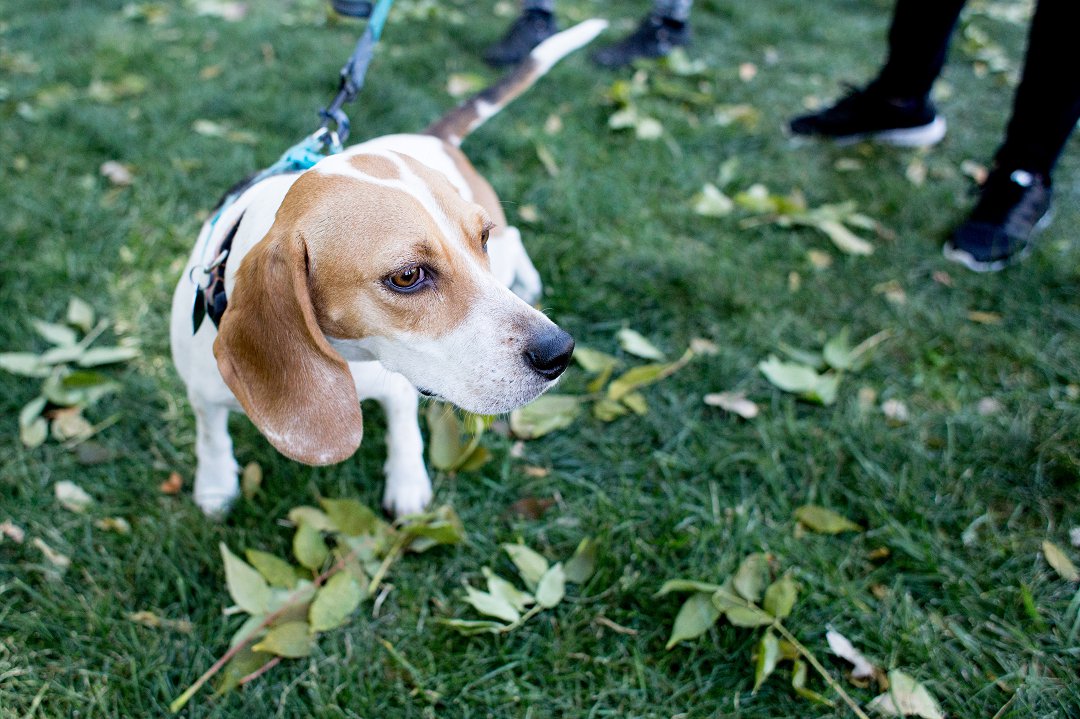Table of Contents
- 1 Introduction: The Benefits of Force-Free Training for Beagles
- 2 Understanding the Principles of Positive Reinforcement in Beagle Training
- 3 Step-by-Step Guide to Implementing Force-Free Training Techniques for Beagles
- 4 FAQs About: Force-Free Beagle Training
- 4.1 Can force-free training be effective for beagles?
- 4.2 How does force-free training differ from other training methods?
- 4.3 What are the benefits of force-free training for beagles?
- 4.4 Can I use clicker training or treat training in force-free beagle training?
- 4.5 Is force-free training ethical and science-based?
- 4.6 Can force-free training help with behavioral issues in beagles?
Introduction: The Benefits of Force-Free Training for Beagles
Are you wondering what force-free beagle training is all about? Well, force-free training is a dog training method that focuses on positive reinforcement and gentle techniques. It avoids the use of aversive methods or physical force, ensuring a stress-free and enjoyable training experience for your beloved beagle.
Force-free training has numerous benefits for beagles and their owners. By using reward-based training and humane methods, you can strengthen the bond with your furry friend while promoting their confidence and well-being. This approach is not only effective but also ethical, ensuring your beagle’s training is based on science and kindness.
In the following sections, we will explore the principles of positive reinforcement in beagle training and provide a step-by-step guide to implementing force-free training techniques. So, let’s dive deeper into the world of force-free training and discover how it can transform your beagle’s training journey.
Understanding the Principles of Positive Reinforcement in Beagle Training
Positive reinforcement training, also known as reward-based training, is a humane and effective method of training beagles. It focuses on rewarding desired behaviors rather than punishing unwanted behaviors. This approach is based on the principle that dogs will repeat behaviors that are followed by a pleasant consequence.
The Science Behind Positive Reinforcement Training
Positive reinforcement training is rooted in behavioral psychology, specifically operant conditioning. This theory states that behaviors that are reinforced are more likely to be repeated in the future. In the case of beagle training, reinforcing desired behaviors with rewards increases the likelihood of those behaviors being repeated.
The Benefits of Positive Reinforcement Training for Beagles
- Builds a strong bond: By using positive reinforcement techniques, you are creating a positive and trusting relationship with your beagle. This helps to strengthen the bond between you and your furry friend.
- Encourages desired behaviors: Positive reinforcement training focuses on rewarding the behaviors you want to see more of. By rewarding your beagle for sitting, staying, or coming when called, you are encouraging these behaviors to become habits.
- Reduces stress and fear: Unlike aversive training methods that involve punishment or intimidation, positive reinforcement training creates a fear-free and pain-free environment for your beagle. This reduces stress and anxiety, allowing your beagle to learn in a calm and relaxed state.
- Promotes mental stimulation: Beagles are intelligent and active dogs that thrive on mental stimulation. Positive reinforcement training provides mental exercise as your beagle learns new commands and tricks, keeping their mind engaged and preventing boredom.
Implementing Positive Reinforcement Techniques
- Use treats: Treats are a popular form of positive reinforcement in beagle training. When your beagle performs a desired behavior, such as sitting, give them a small treat as a reward. This reinforces the behavior and motivates them to repeat it in the future.
- Use a clicker: Clicker training is another effective positive reinforcement technique. The clicker is a small device that makes a distinct clicking sound when pressed. By pairing the click with a reward, such as a treat, your beagle learns to associate the click with a positive outcome.
- Be consistent: Consistency is key in positive reinforcement training. Use the same cues and rewards consistently to avoid confusion. Set clear expectations and reward your beagle each time they exhibit the desired behavior.
By understanding the principles of positive reinforcement and implementing these techniques in your beagle’s training, you can create a positive and effective learning experience for your furry friend. The next section will provide a step-by-step guide to implementing force-free training techniques for beagles, further enhancing their training journey.
Step-by-Step Guide to Implementing Force-Free Training Techniques for Beagles
Implementing force-free training techniques for Beagles is a gentle and effective way to train your furry friend. By using positive reinforcement and reward-based training methods, you can create a strong bond with your Beagle while teaching them important commands and behaviors. Here is a step-by-step guide to help you get started:
1. Understand the Principles of Positive Reinforcement Training
Positive reinforcement training focuses on rewarding desired behaviors rather than punishing unwanted ones. This method is based on the idea that dogs are more likely to repeat behaviors that are followed by something pleasurable. By using treats, praise, and other rewards, you can motivate your Beagle to learn and obey commands.
2. Set Clear Training Goals
Before starting the training process, it’s important to define your goals. Determine what behaviors you want your Beagle to learn, such as sit, stay, or come. Break down these behaviors into smaller steps to make the training process more manageable.
3. Use a Clicker or Verbal Marker
A clicker or verbal marker, such as saying “yes” or “good,” can be used to mark the desired behavior at the exact moment it occurs. This helps your Beagle understand which behavior is being rewarded. Pair the click or marker with a treat to reinforce the positive association.
4. Start with Basic Commands
Begin training by teaching your Beagle basic commands like sit, stay, and come. Use treats as a reward for successfully following the command. Be patient and repeat the command multiple times until your Beagle understands what is expected.
5. Gradually Increase Difficulty
Once your Beagle has mastered the basic commands, gradually increase the difficulty level. Introduce distractions, such as other dogs or toys, to test their focus and obedience. Reward them for successfully following commands in challenging situations.
6. Be Consistent and Patient
Consistency is key when training your Beagle. Use the same commands and rewards consistently to avoid confusion. Be patient and understand that each dog learns at their own pace. Celebrate small victories and continue to reinforce positive behaviors.
7. Seek Professional Help if Needed
If you encounter difficulties during the training process, don’t hesitate to seek professional help. A certified dog trainer experienced in force-free training methods can provide guidance and support to ensure a successful training experience for both you and your Beagle.
By following this step-by-step guide, you can implement force-free training techniques for your Beagle and enjoy a positive and rewarding training experience. Remember to always use humane and ethical training methods that prioritize your Beagle’s well-being and happiness.
FAQs About: Force-Free Beagle Training
Can force-free training be effective for beagles?
Absolutely! Force-free training is not only effective but also highly recommended for beagles. These gentle training techniques, based on positive reinforcement and reward-based training, can help your beagle learn and respond to commands in a positive and enjoyable way.
How does force-free training differ from other training methods?
Force-free training, also known as humane or non-coercive training, focuses on using kind and dog-friendly methods. Unlike aversive training techniques that involve punishment or physical force, force-free training emphasizes positive reinforcement and avoids causing fear or pain to your beagle.
What are the benefits of force-free training for beagles?
Force-free training offers numerous benefits for beagles. It creates a strong bond between you and your dog, promotes trust and cooperation, and encourages your beagle to actively participate in the training process. Additionally, force-free training helps prevent behavioral issues and fosters a positive learning environment for your furry friend.
Can I use clicker training or treat training in force-free beagle training?
Absolutely! Clicker training and treat training are both examples of force-free training techniques that can be highly effective for beagles. Clicker training uses a clicking sound to mark desired behaviors, while treat training involves rewarding your beagle with treats for good behavior. These methods can be fun and motivating for your beagle during the training process.
Is force-free training ethical and science-based?
Yes, force-free training is both ethical and science-based. It aligns with the principles of animal welfare and focuses on using evidence-based techniques. By understanding how dogs learn and utilizing positive reinforcement, force-free training ensures a humane and effective approach to training your beagle.
Can force-free training help with behavioral issues in beagles?
Absolutely! Force-free training can be highly beneficial in addressing behavioral issues in beagles. By using positive reinforcement and gentle techniques, you can encourage desired behaviors and redirect unwanted behaviors. It’s important to consult with a professional dog trainer or behaviorist to develop a tailored training plan for your beagle’s specific needs.






Leave a Reply